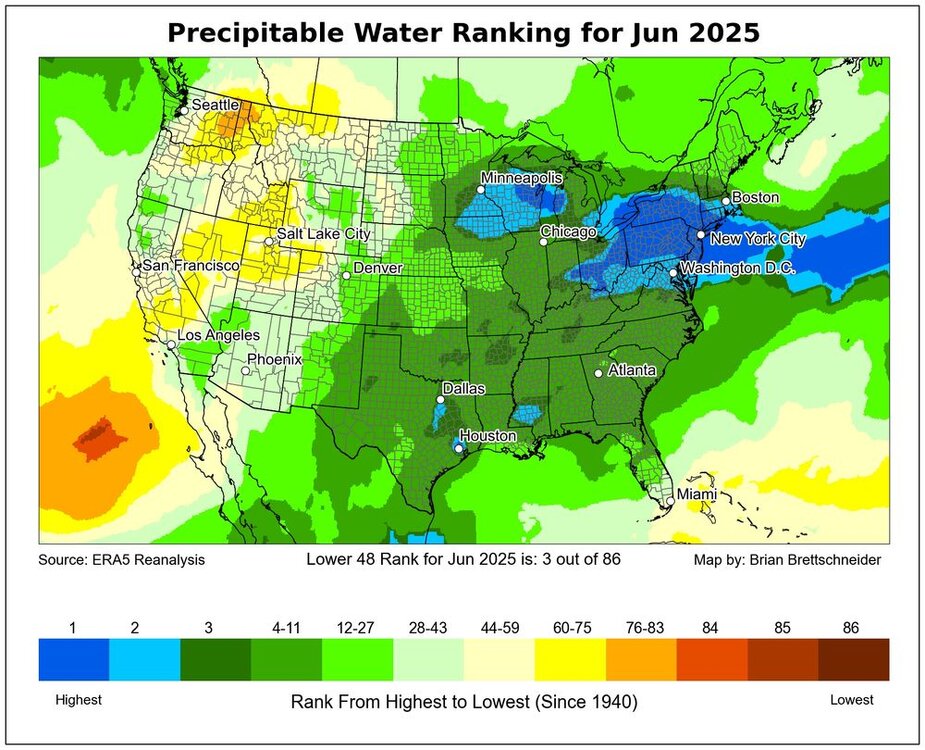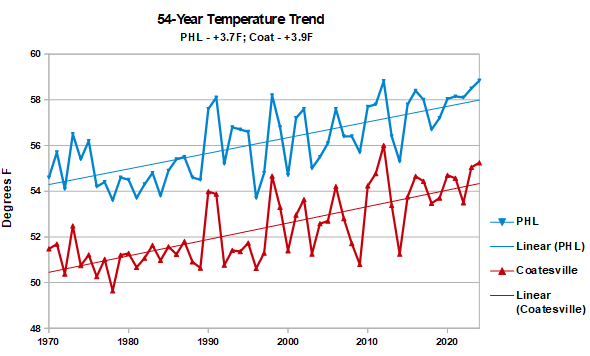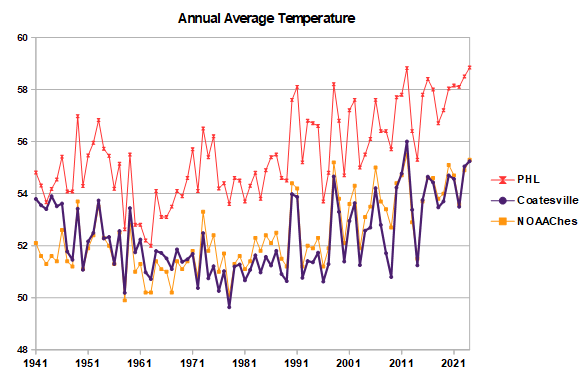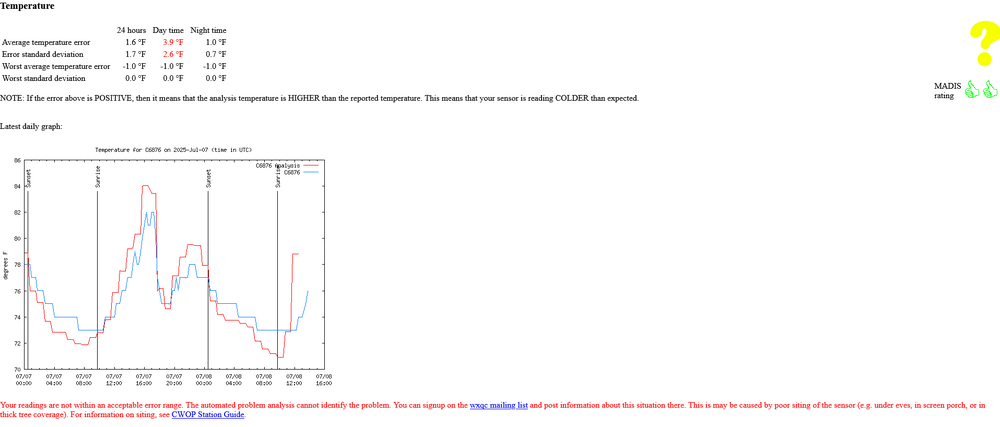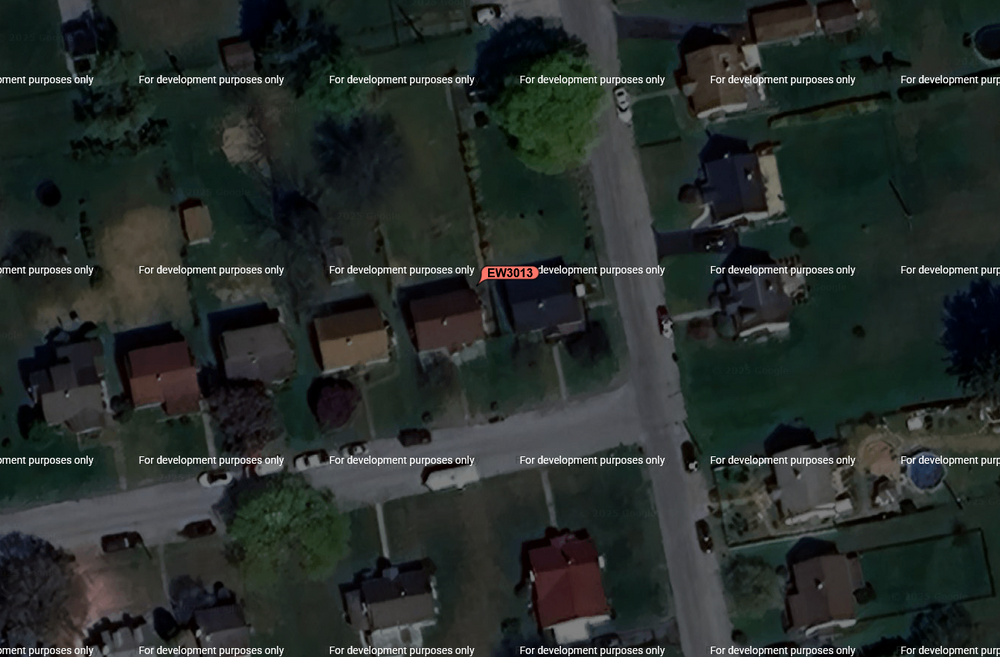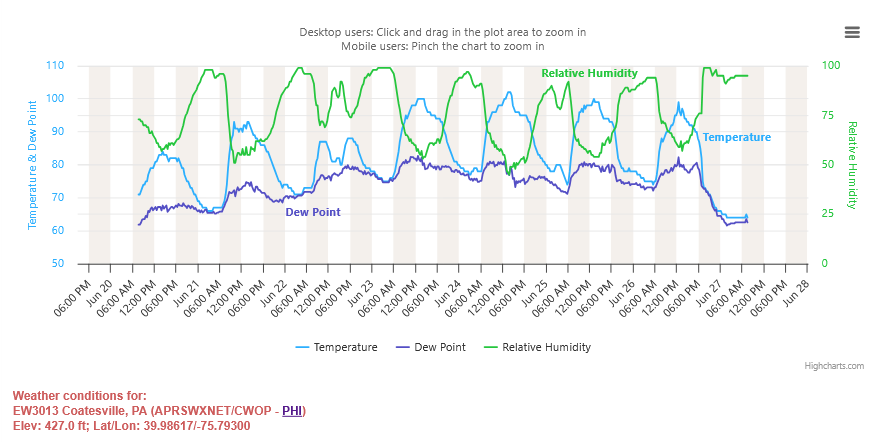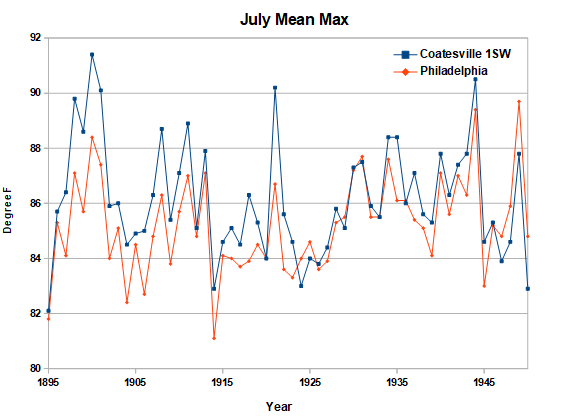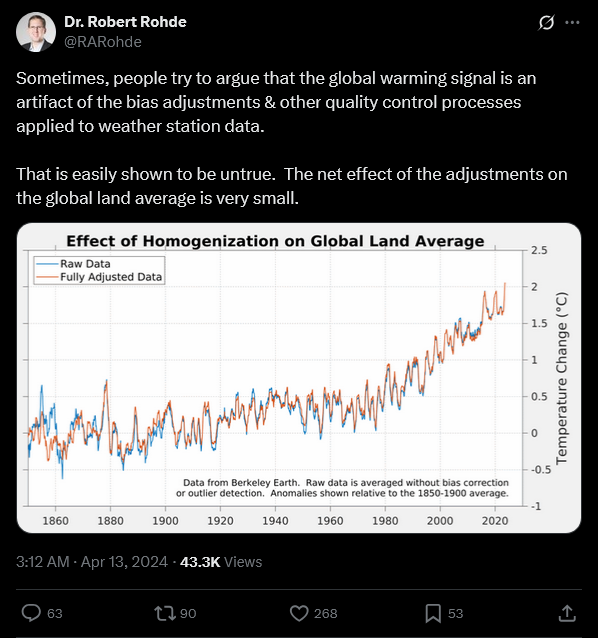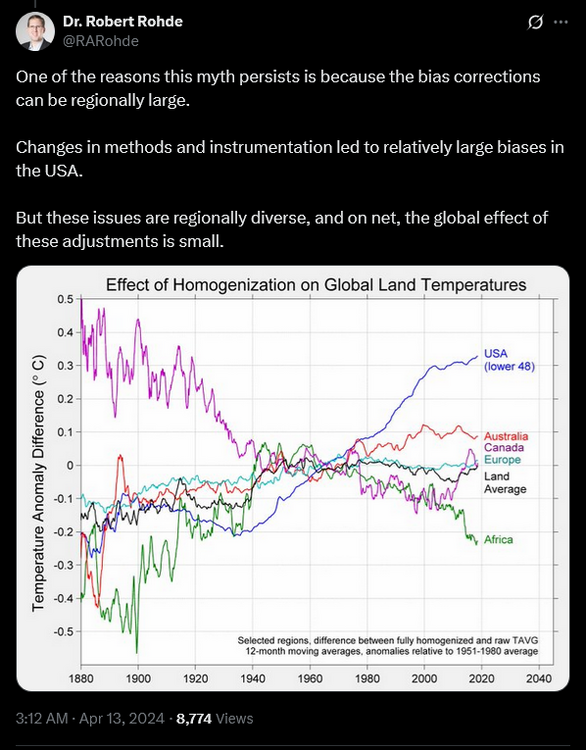
chubbs
Members-
Posts
3,910 -
Joined
-
Last visited
About chubbs

Profile Information
-
Gender
Not Telling
-
Location:
New London, PA
Recent Profile Visitors
The recent visitors block is disabled and is not being shown to other users.
-
This is a good recent review article. Anthropogenic intensification of short-duration rainfall extremes https://hal.inrae.fr/hal-03838107v1/file/2021_Fowler_Nature reviews earth%26environment.pdf
-
-
Chester County PA - Analytical Battle of Actual vs. Altered Climate Data
chubbs replied to ChescoWx's topic in Climate Change
So for Phoenixville what is the difference between ghost and actual? -
Chester County PA - Analytical Battle of Actual vs. Altered Climate Data
chubbs replied to ChescoWx's topic in Climate Change
It isn't clear what you did. What stations were used for the red line? The stations listed in your post: Phoenixville, West Grove, Coatesville, Glenmoore, Honey Brook, West Chester and Devault? If so it's a much different set of stations vs the blue that could easily explain the differences between the two lines. -
Chester County PA - Analytical Battle of Actual vs. Altered Climate Data
chubbs replied to ChescoWx's topic in Climate Change
How IEM estimates missing values is explained on the IEM site. Likewise NOAA/NCEI's method is explained in peer reviewed articles and other documentation. No sleuthing, no tin foil hat, needed. You didn't answer my question about the stations used for your red and blue lines. Wonder why. -
Chester County PA - Analytical Battle of Actual vs. Altered Climate Data
chubbs replied to ChescoWx's topic in Climate Change
Yes, the facts. Can you list the stations that the red and blue lines were derived from? -
Chester County PA - Analytical Battle of Actual vs. Altered Climate Data
chubbs replied to ChescoWx's topic in Climate Change
Thinking about this. The chart tells us more about your method than it does about "ghost data". The "ghost data" is a simple re-analysis product developed by IEM. There is no bias adjustment. Raw data from available sites is used to back fill for missing data at other stations. So you are plotting raw data vs raw data. Not sure what you did, but guessing that the main difference between the two charts is the station population. Your base analysis, the blue line, starts with a relatively warm station population and transitions to a cool group. Which completely hides local warming. Use a group of stations with less cooling bias and the warming re-appears. Thanks for illustrating how your method distorts our local climate. Of course the red line still underestimates warming because station moves and other station changes are included. -
Chester County PA - Analytical Battle of Actual vs. Altered Climate Data
chubbs replied to ChescoWx's topic in Climate Change
18 years is a short period so there is uncertainty in the individual station slopes. Here are a couple of charts that cover a longer period. Local warming has been roughly 7F per decade for the past 54 years. Warming has sped up over the past 15-20 years globally so higher rates of warming locally recently wouldn't be surprising. But, a longer period of time is needed to say anything definitive. What we can say is that there is no evidence that Chester County is warming any differently than other regional sites. Can also see that the Coatesville station moves in 1946/47 makes raw data before then unusable for climate trend purposes. -
Came across a paper on the North Atlantic marine heatwave of 2023. Light winds were the main cause not ocean transport. Supports the idea that this years Atlantic cooling is due to stronger winds. https://www.nature.com/articles/s41586-025-08903-5
-
Chester County PA - Analytical Battle of Actual vs. Altered Climate Data
chubbs replied to ChescoWx's topic in Climate Change
Thanks for the info. The old Coatesville COOP didn't have fan aspiration either. None of the older stations did. Another reason to remove station changes from the raw data. That is an interesting site. The average daytime error on your own station over the past 7 days, 3.9F, is almost as high as the Coatesville station but in the other direction. The main message here is that every station is different. You can't throw a changing station population into a spreadsheet, take a simple average, and expect to get the right answer. -
Chester County PA - Analytical Battle of Actual vs. Altered Climate Data
chubbs replied to ChescoWx's topic in Climate Change
Found a MADIS site in Coatesville that is close to the WWII location of the Coatesville COOP. Per google map shot below, the area around the current station is less built up, with larger lot sizes, than the old COOP site which I have posted previously. Per chart below, the current Coatesville station hit 100 3 days in a row during the recent heat wave, topping out at 102.2. During the heat wave, high temperatures at the station ran roughly 1F warmer than the Philadelphia airport. Interestingly, the Coatesville COOP also ran roughly 1F warmer than the Philadelphia airport in June and July during WW2. Indicating that the current MADIS station is a good match to the Coatesville COOP before it's move to a cooler location in 1946+47. Warmer July highs than Philadelphia were not unusual Coatesville before the 1946 and 1947 moves to a cooler, more rural, location. Shows how warm the Chesco COOPs were back in the day and the mismatch between older and modern stations in Chester County. Another datapoint that supports scientific methods to remove station moves and other network changes that contaminate raw temperature data. -
Chester County PA - Analytical Battle of Actual vs. Altered Climate Data
chubbs replied to ChescoWx's topic in Climate Change
Don't forget your tin hat. -
Chester County PA - Analytical Battle of Actual vs. Altered Climate Data
chubbs replied to ChescoWx's topic in Climate Change
As I thought "ghost data" is a big nothing burger. A figment of the denier imagination. The estimates are made by IEM not NOAA. Below is IEM's rationale for providing estimates. Why do this? Previously, the IEM has only provided raw observations with limited quality control checks in place. Quality control is hard! Many times, users are simply looking for something "close" and perhaps not as perfect as high quality sensor observations can be. Producing a gridded analysis is one way to produce a dataset from point observations which can be sampled as a means of spatial interpolation. https://mesonet.agron.iastate.edu/iemre/ -
Chester County PA - Analytical Battle of Actual vs. Altered Climate Data
chubbs replied to ChescoWx's topic in Climate Change
Don't know what you are talking about. Can you provide a link to the so called "ghost data". -
You complain about being called a denier; but, your posts are the same old denier talking points or charts. Long debunked. Science moved on from this issue decades ago.


